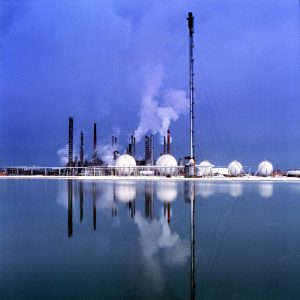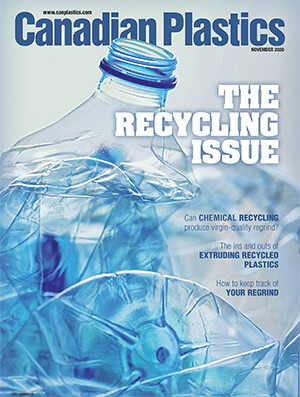
Petrochemical growth spurt bodes well for Canada’s plastics industry
Canadian Plastics
Economy Market Forecast MaterialsCanada's capital spending on industrial chemical industry projects is expected to jump by 65 per cent in 2019.
Thanks in large part to incentive programs by federal and provincial governments, Canada’s petrochemical industry is headed for its biggest surge of expansion spending in five years in 2019 – which is welcome news to the manufacturing sector, plastics processing in particular.
Capital spending on industrial chemical industry projects in Canada this year is expected to jump by 65 per cent to $1.9 billion, the highest since $2.2 billion in 2014 and third-highest in a decade, according to a year-end members survey by the Chemistry Industry Association of Canada (CIAC), which represents producers of 75 per cent of the country’s chemical products by value.
Employment is expected to rise by about four per cent or 640 jobs to 17,670.
Capital spending in Canada this year will come mainly from construction already underway on two projects to turn petrochemicals produced with natural gas into plastic pellets: Inter Pipeline Ltd.’s $3.5 billion polypropylene project in central Alberta and the $2 billion expansion of Nova Chemicals Corp.’s polyethylene plant at Sarnia, Ont.

Nova Chemicals’ plant in Windsor, Ont.
The former is to receive $200 million in royalty credits under a 2016 Alberta NDP government program, while the latter is backed by $100 million through Ontario’s Jobs and Prosperity Fund and $35 million from Ottawa’s Strategic Investment Fund.
“On a global basis, as all jurisdictions are trying to attract investment, the governments at various levels – federal, state and provincial – play a role,” said Nova CEO Todd Karran said in a recent interview with The Canadian Press.
Last year, Karran noted, Alberta announced two programs worth $2.1 billion in royalty credits, grants and loans to encourage investments in petrochemical feedstock and manufacturing facilities. Winning bids for these projects are expected to be announced soon.
Meanwhile, a final investment decision is expected soon on a $4 billion polypropylene project by a joint venture of Calgary-based Pembina Pipeline Corp. and a subsidiary of Kuwait Petroleum Corp., eligible for $300 million in royalty credits under the 2016 Alberta program. “Our made-in-Alberta plan means new projects must do the right thing for the environment, and by upgrading more here at home instead of shipping our raw product south of the border, we reduce emissions and ensure Alberta is among the most responsible and lowest emissions petrochemical producers in the world,” provincial Energy Minister Marg McCuaig-Boyd said in a statement.
As important as they are, Canadian petrochemical expansions are still dwarfed by the activity south of the border. A total of 333 new U.S. chemical industry projects using shale gas had been announced as of September, according to the American Chemistry Council. Those projects account for US$202 billion in new capital investment and are expected to create 431,000 direct and indirect jobs by 2025.
In both Canada and the U.S., the main driver of growth is an ample and inexpensive supply of natural gas-based feedstocks like methane, ethane and propane that can be transformed into chemical building blocks such as methanol, ammonia, ethylene and propylene.
Mixed in with the optimism, however, is an awareness among many in Canada’s chemical industry of its environmental reputation. The CIAC, for example, supports a target of 100 per cent of plastics packaging to be either reusable, recyclable or recovered by 2040 (and 100 per cent to be recyclable or recoverable by 2030), although it acknowledges it can’t accomplish that without the co-operation of manufacturers, regulators and the general public.
One big step in that direction came earlier this week, when Nova Chemicals announced it was one of 30 founding members of the international Alliance to End Plastic Waste, which is making a combined initial commitment of US$1 billion to find ways over the next five years to eliminate plastic waste in the environment.
